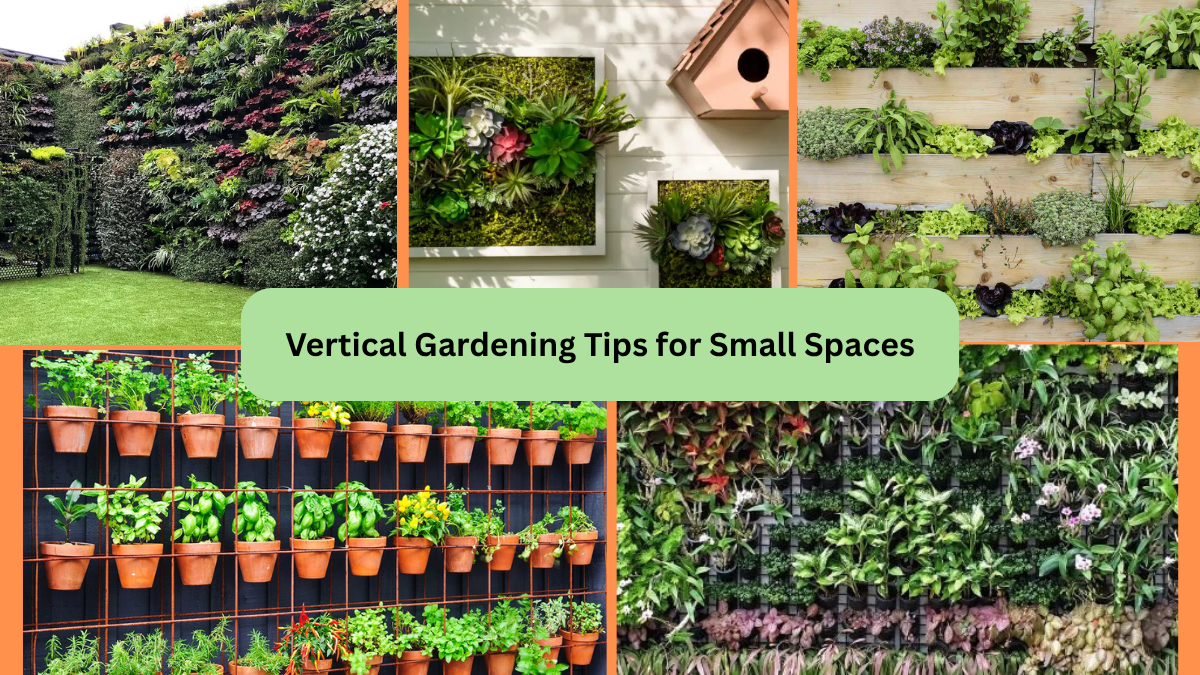Love plants but running out of room? Don’t worry — vertical gardening is the perfect solution for small spaces! Whether you live in a compact apartment, have a small balcony, or a limited backyard, vertical gardening lets you grow a lush, green paradise without taking up precious floor space.
In this detailed guide, you’ll discover the benefits of vertical gardening, creative ideas for setting up your vertical garden, and smart, practical tips to make the most of your vertical growing space.
What is Vertical Gardening?
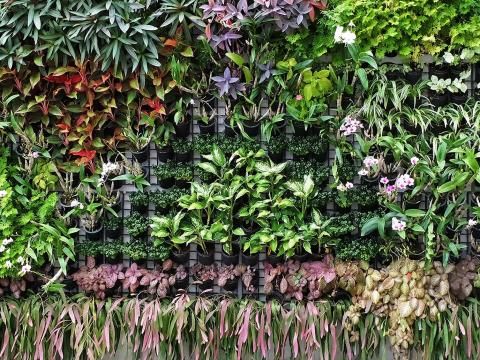
Vertical gardening is the art of growing plants upward, using walls, trellises, shelves, hanging planters, and other vertical structures instead of spreading plants across the ground. This clever, space-saving method works well for:
- Small apartments
- Balconies
- Tiny patios
- Fences
- Even indoor walls
Vertical gardens can include vegetables, herbs, flowers, or ornamental plants, making them versatile for both edible and decorative greenery.
Benefits of Vertical Gardening
✔ Maximizes small spaces
✔ Adds beauty to plain walls and fences
✔ Improves air quality and reduces indoor heat
✔ Makes plant maintenance easier
✔ Protects plants from pests and soil-borne diseases
✔ Offers excellent drainage and air circulation
✔ Allows for creative and artistic garden displays
Whether you’re aiming for a vibrant herb wall in your kitchen or a green privacy screen on your balcony, vertical gardens open up endless possibilities.
Best Plants for Vertical Gardening
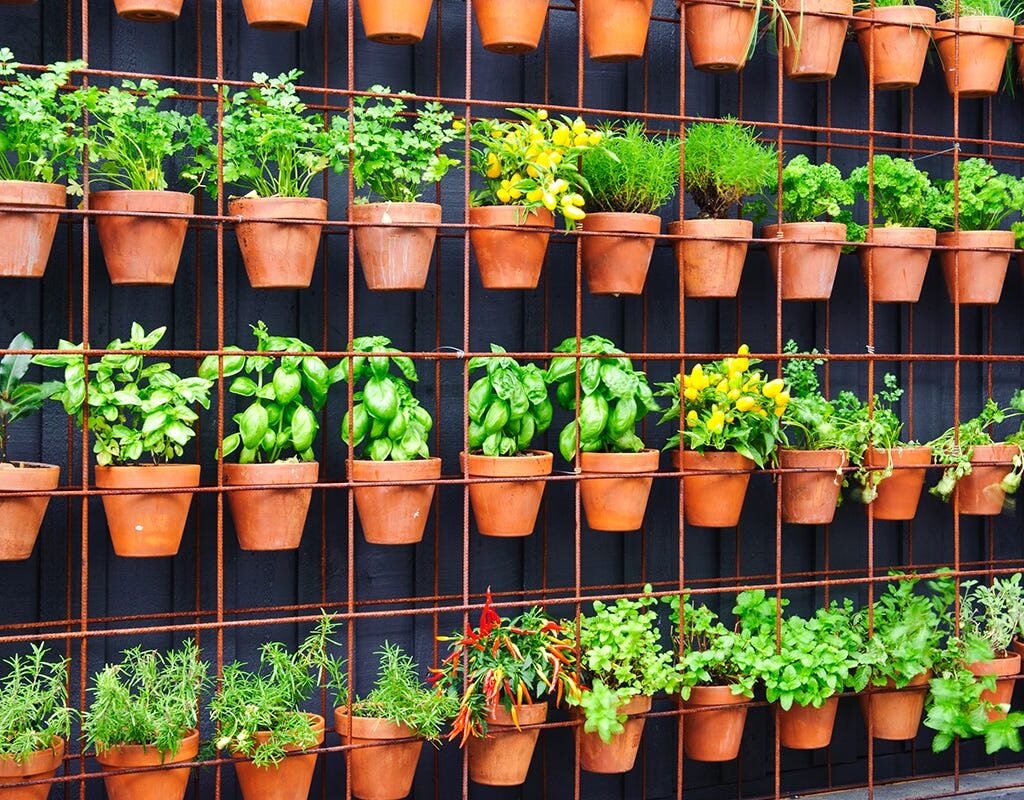
When planning a vertical garden, select plants that thrive in the conditions of your chosen space (sunlight, humidity, and temperature). Here are excellent vertical-growing options:
Edible Plants
- Herbs: Basil, Mint, Parsley, Thyme, Coriander
- Lettuce and leafy greens: Spinach, Kale, Swiss Chard
- Climbing veggies: Beans, Peas, Cucumbers, Cherry Tomatoes
- Strawberries (perfect for wall pockets)
Flowering Plants
- Petunias
- Nasturtiums
- Pansies
- Morning Glories
- Verbena
Indoor Plants
- Pothos
- Philodendron
- Ferns
- Spider Plants
- Succulents
Tip: Choose lightweight, compact, or trailing plants for the upper levels, and heavier, sturdy plants for lower spots.
Vertical Gardening Ideas for Small Spaces
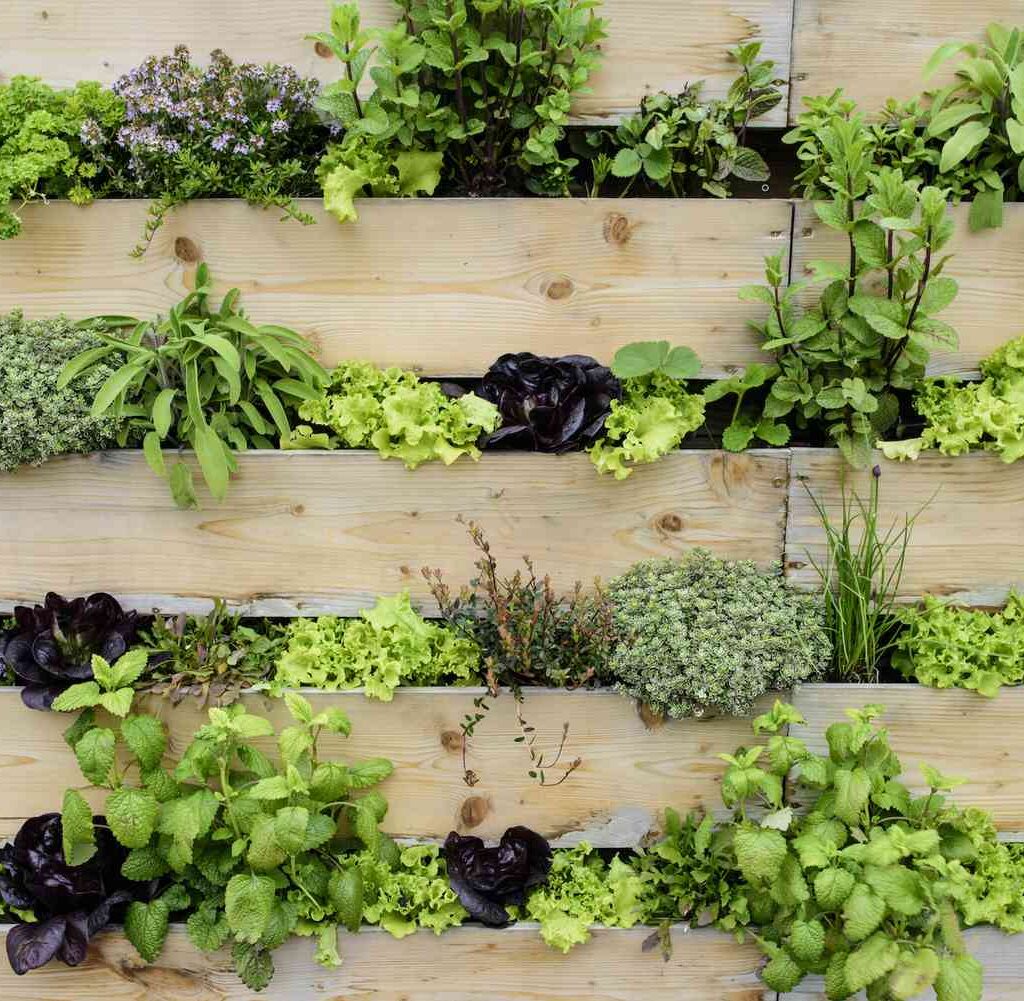
Get creative with these smart and stylish vertical gardening solutions:
Wall-Mounted Planters
Use shelves, small pots, or hanging pockets mounted directly onto your wall. Ideal for herbs, flowers, and succulents in kitchens, balconies, or living rooms.
Hanging Baskets
Suspend baskets from hooks or ceiling rods, allowing trailing plants to cascade down. A beautiful option for ferns, pothos, and flowering plants.
Vertical Pallet Gardens
Upcycle wooden pallets by adding pockets or planting between slats. Lean against a wall for an instant rustic green wall.
Trellis or Wire Mesh
Attach a trellis to a fence or wall and train climbing plants like peas, beans, and flowering vines to grow upward.
Ladder Plant Stands
A tiered plant stand or an old ladder offers multiple shelves for displaying potted plants vertically.
Shoe Organizers
Hang fabric shoe organizers filled with soil and small plants. Ideal for herbs, strawberries, or succulents.
Stackable Planters
Use modular, stackable pots or towers that allow plants to grow upward while using minimal floor space.
Macramé Plant Hangers
Add a decorative touch to your small balcony or living room by hanging pots in stylish macramé holders.
Essential Vertical Gardening Tips
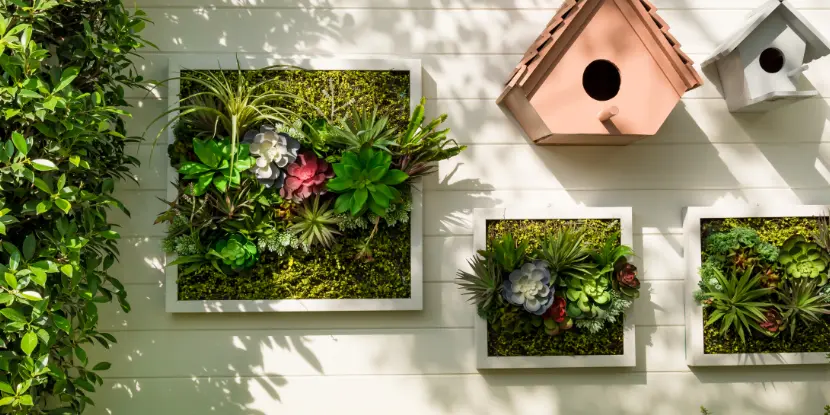
To make your vertical garden flourish, follow these key tips:
Choose the Right Location
Determine whether your plants need full sun, partial shade, or indirect light. South-facing walls and balconies typically receive the most sunlight.
Tip: Rotate plants occasionally to ensure even growth.
Select Lightweight Containers
Use plastic, fabric, or lightweight resin pots to avoid putting excessive weight on your walls, fences, or hangers.
Important: Ensure all containers have drainage holes to prevent root rot.
Use High-Quality Potting Mix
Vertical planters often dry out faster than ground beds. Use a moisture-retaining, well-draining potting mix enriched with organic matter.
Water Wisely
- Vertical setups may require more frequent watering, especially on hot days.
- Water from the top down, allowing gravity to help irrigate lower plants.
- Use a spray bottle or long-spouted watering can for tight spots.
Tip: Add mulch or sphagnum moss to retain soil moisture.
Fertilize Regularly
Since vertical planters hold limited soil, nutrients get used up quickly. Feed plants with a diluted liquid fertilizer every 2–3 weeks during the growing season.
Prune and Harvest Often
Keep plants healthy and encourage continuous growth by regularly pruning dead leaves and harvesting edible plants like herbs, lettuce, and beans.
Install a Simple Irrigation System (Optional)
If you have a large vertical garden, consider a drip irrigation kit or self-watering planters to simplify watering tasks.
Common Vertical Gardening Mistakes to Avoid
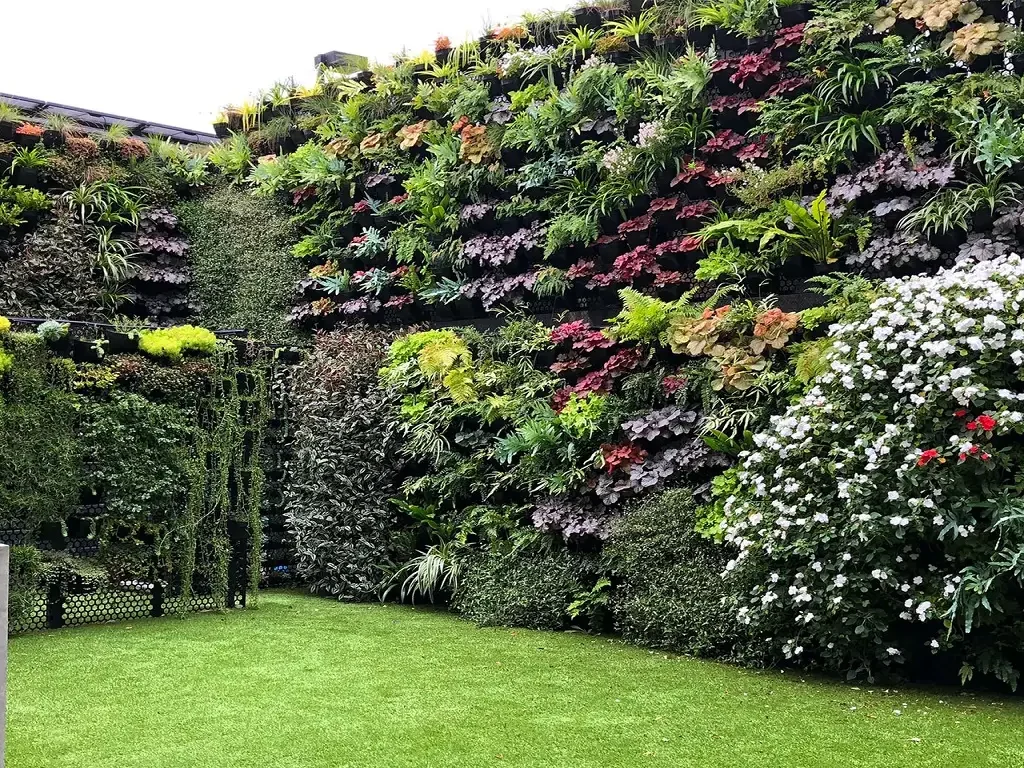
Using heavy soil mixtures
Overcrowding plants
Neglecting drainage needs
Not checking light requirements
Using heavy, fragile containers on weak structures
Skipping regular watering and fertilizing
Avoiding these mistakes ensures your vertical garden remains vibrant, healthy, and easy to manage.
Vertical Gardening Indoors vs Outdoors
Indoor vertical gardens:
- Use trailing houseplants, herbs, and small flowers
- Ensure good light exposure (grow lights help)
- Control humidity and avoid overwatering
Outdoor vertical gardens:
- Choose sun-loving vegetables, flowering vines, or climbers
- Ensure structures are weatherproof and sturdy
- Water and fertilize consistently during growing months
Final Thoughts
Vertical gardening transforms even the tiniest spaces into lush, living walls of greenery. Whether you dream of a vertical herb garden in your kitchen, a colorful plant wall on your balcony, or a trellis of climbing veggies, there’s a vertical solution for you.
By choosing the right plants, using smart structures, and following essential care tips, you can create a vibrant vertical garden that’s easy to maintain and visually stunning.
So, don’t let a lack of space stop you — start growing upward and turn your small space into a vertical green haven today!
